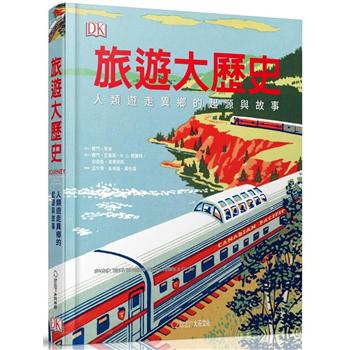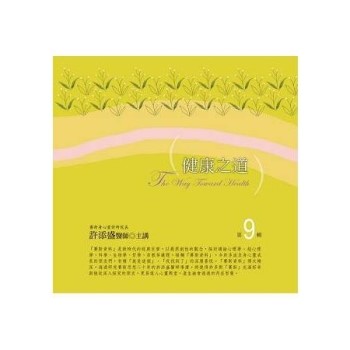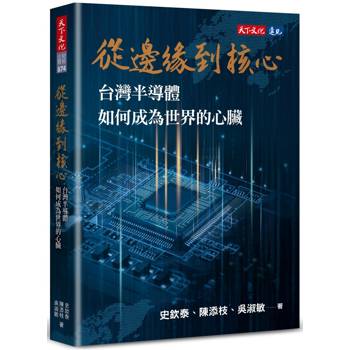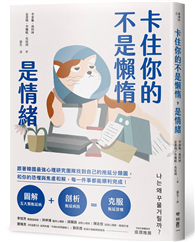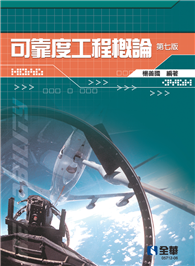| FindBook |
有 7 項符合
課本沒教的台灣華語句型50全新修訂版 Taiwan Mandarin: 50 Patterns Not in Your Textbook的圖書 |
| 圖書選購 |
| 型式 | 價格 | 供應商 | 所屬目錄 | $ 408 |
語言 |
$ 432 |
中文書 |
$ 432 |
華語會話 |
$ 432 |
漢字教學 |
$ 432 |
中文 |
$ 432 |
語言學習 |
$ 432 |
中文 |
|---|
| 圖書館借閱 |
| 國家圖書館 | 全國圖書書目資訊網 | 國立公共資訊圖書館 | 電子書服務平台 | MetaCat 跨館整合查詢 |
| 臺北市立圖書館 | 新北市立圖書館 | 基隆市公共圖書館 | 桃園市立圖書館 | 新竹縣公共圖書館 |
| 苗栗縣立圖書館 | 臺中市立圖書館 | 彰化縣公共圖書館 | 南投縣文化局 | 雲林縣公共圖書館 |
| 嘉義縣圖書館 | 臺南市立圖書館 | 高雄市立圖書館 | 屏東縣公共圖書館 | 宜蘭縣公共圖書館 |
| 花蓮縣文化局 | 臺東縣文化處 |
|
|
despite having no problem communicating in Mandarin with Taiwanese?
你是優秀的華語教師,
在尋找更貼近台灣人口語的華語教材?
你在找的就是《課本沒教的台灣華語句型50》!
★適讀程度
適合相當於台灣華語文能力測驗(TOCFL)基礎級、歐洲共同語文參考架構(CEFR)A2級程度之課堂或自學生使用。
★5個單元 X 50個句型
本書精選台灣華語中的50個口語句型及詞彙,依主題分類成5大單元,並以中英雙語介紹。這些所選句型及詞彙不限於學術界所定義「規範的台灣國語」,不一定收錄於一般中文教科書中,卻是在台灣使用最頻繁、道地的華語,適合基礎級以上的中文學習者,進一步認識台灣華語及台灣文化。
第一單元:台灣華語句式Part I: Taiwan Mandarin Sentence Patterns
第二單元:語氣助詞 Part II: Modal Particles
第三單元:流行語句型 Part III: Catch Phrase Patterns
第四單元:台語詞彙 Part IV: Taiwanese Morphemes
第五單元:外來語詞彙Part V: Loan Morphemes
★5大步驟 X 2大學習工具
本書用5大步驟帶領讀者學習50個句型,每個步驟皆以中英雙語呈現,並輔以「練習」及「音檔」2大學習工具,讀者可與5大步驟搭配學習,效果更加。
★全書50個句型皆以下列步驟呈現:
.步驟1:情境例句/原文例句
情境例句是用對話的方式呈現句型,模擬真實使用情況。唯「第三單元:流行語句型」收錄該流行語句型中,最先開始廣泛使用的原始句子。
例:
A:你怎麼還在用不能上網的手機啊?
B:就沒有需要「咩」。反正在家、在辦公室都可以上網。
A: Why are you still using a phone that doesn’t have internet access?
B: There is no need for that. I can access the internet at home and at the office anyway.
.步驟2:句型/結構說明
句型/結構說明是將同類的句子或詞彙拆解開來分析,而得到其組成的關鍵成份。實際使用的時候可以加上副詞、時間詞等等。
例:
S+咩。
.步驟3:用法/出處
解釋使用該句型的情況和意義,以及其他應該注意的事項。在第三單元中,則多補充介紹流行語的起源、背景,並提供兩個重點詞彙,幫助中高級程度學習者增加詞彙。
例:
「咩」用在陳述句尾來表示說話者聲明自己的看法,無論別人是不是贊同。因為是說話者自己的看法,所以主語如果是「我」往往省略不說,也經常和「就」或「就是」一起使用,來加強肯定的語氣。
.步驟4:例句
本書提供的例句有單句也有對話,包含邀請、道歉、打招呼、告別、感謝等等社交情境。例句內容能成為與母語者談論的話題,藉以促進中高級程度的學習者練習成段表達。
例:
A:你怎麼連這個都不會?
B:就第一次用「咩」。
A: How can you not know how to do this?
B: It’s just the first time I’m using it.
.步驟5:原來如此/你知道嗎
補充句型相關的語文知識或者是文化短文,也可以作為中高級程度的閱讀材料。
例:
「咩」的用法與另一個很常用的語氣詞「嘛」相當接近,這個語氣詞普通話也用。「嘛」也是附在陳述句末,表示事情就該這樣、理由很明顯,暗示聽話者應該認同,例如:「有意見就說嘛,你怎麼不說呢?」。
★與50個句型搭配使用的學習工具:
.工具1:練習
每三或四個句型之後安排一個綜合練習,解答列在附錄。每個練習的最後提供一個沒有標準答案的「挑戰你自己」的小單元,學習者可以向母語者詢問自己的回答是否恰當。
.工具2:音檔
書中的所有例句皆有音檔,包含情境例句,以幫助學習者漢字識讀、發音以及流利度。讀者可下載書中所有音檔,將最道地的台灣華語帶著走,隨時隨地都能練習聽力口說。
不論你是華語學習者、華語教師,或外國朋友一堆,想推廣台灣華語的國民外交官,或身為一名台灣人,好奇自己習慣的句法有哪些?它們背後反應了哪些台灣文化和台灣味?相信僅僅是帶著這樣的心情,想從不同的角度再次認識自己最熟悉的台灣華語,《課本沒教的台灣華語句型50》讀來也會饒富趣味。今天就給自己和外國友人一個機會,好好認識台灣華語吧!
★本書特色
‧收錄最貼近台灣人口語表達的50個華語句型。
‧依主題分類,句句拆解句型結構,並解說句型背後代表的台灣文化。
‧全書中英雙語解說,輔助理解最貼心。
‧全書情境對話及例句皆附台灣華語朗讀音檔,發音貼近實際語境,更容易帶入使用情緒,有效幫助記憶。
作者簡介:
蔡佩庭
台灣師範大學華語文教學研究所碩士,曾擔任美國德州休士頓萊斯大學(Rice University)中文講師、大學進修推廣教育中文班教師、律師事務所中文班教師、以及Freeman Foundation德州中文教師培訓講師。教授過從初級到高級各個程度與不同年齡背景的學生。2015年獲選萊斯大學最受歡迎教師;2016年榮獲美國中文教師學會第二屆國際中文教學論壇最佳教學活動。
Peiting Tsai received her M.A. in Teaching Chinese as a Second Language from Taiwan Normal University in Taipei, Taiwan. She has been a teacher of Mandarin Chinese as a foreign or second language for more than fifteen years. She has taught all levels and to various background learners. One of the teaching activities she designed was recognized as a “Best Teaching Activity” at the CLTA Second International Symposium on Chinese Teaching and Learning in 2016. Her teaching and research interests include teaching language through TV dramas, discourse, pragmatics, and cognitive linguistics. She likes to share her native culture with her students through teaching.
Email: tsaipeiting@gmail.com
內容把研究台灣華語的學術論文,轉化為通俗易懂的知識,並且搭配在台灣生活可能遇到的情境例句,很適合作為語言交換的話題,部分句式也指出了台灣華語與中國普通話的差異。另外,一般母語者很難解釋清楚的常用語氣詞,本書也說明了其功能與使用情境。而透過大眾傳播媒體上經常出現的流行語句式,以及種種台語和外來語詞彙,讀者也能夠更認識台灣當代社...
作者序 Preface
至讀者 To the Reader
凡例 Introduction
句型結構說明 Symbols
縮語表 Abbreviation of Terms
第一單元:台灣華語句式Part I: Taiwan Mandarin Sentence Patterns
1. 有+VP yǒu sentence
2. V+說 說+Vst shuō sentence
3. 給+N+V gěi sentence
練習一
4. 在+V zài sentence
5. 來去+VP láiqù sentence
6. 用+Vact+的 yòng sentence
練習二
7. 會/不會+Vst huì sentence
...
|


